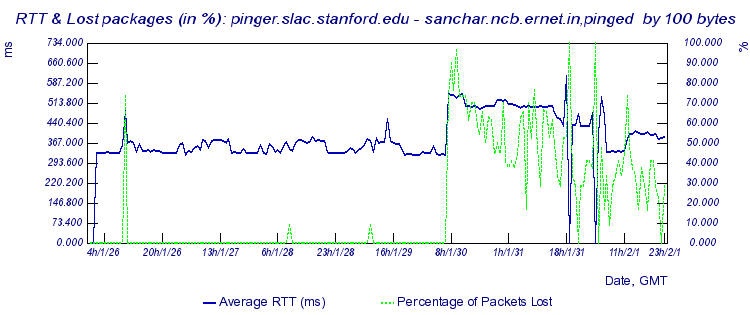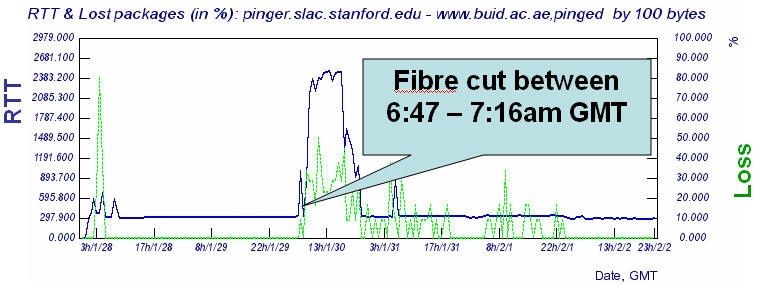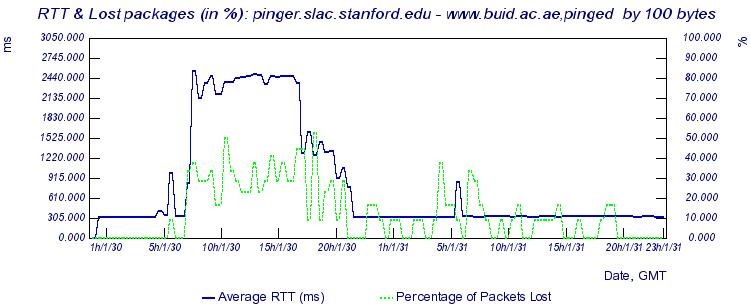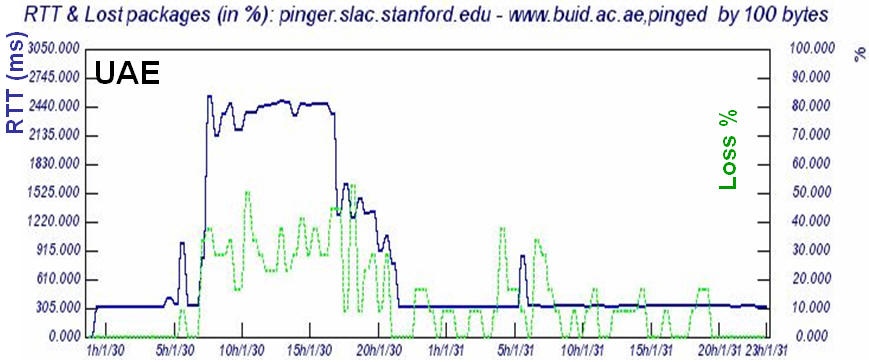...
An example of the effect is seen below for a host in Bangalore, India. It can be seen that the Round Trip Time (RTT) went from about 360ms to about 500ms and the losses increased dramatically from close to 0 to 40-60%. Closer inspection shows that for this connection the event occurred between 6:47 and 7:16 am January 30th, 2008 GMT. It appears that by the end of February 1, 2008, there were still significant losses for this site.
It is also seen that though the RTTs were restored to normal on January 31st, the losses wre still significant through February 1st 2008.
The Figure below for a host in the United Arab Emirates shows the impact of the cut and the recovery 15-20 hours later as the traffic was presumably re-routed.
Looking further into data by PingER we can estimate the approximate start time for this event. The exact time is a bit harder to explain but it is generally between 5 AM and 7 AM GMT on January 30th 2008 for most of the countries in table 1 with the only exception of Bahrain where it all started at 9AM. The differences might be due to the measurement sampling rate or the lack of load to cause congestion until people came to work later.
PingER calculates the throughput of different nodes from the Round Trip Time (RTT) and loss using the Mathis formula. It is interesting to see the effect on throughput of the regions suffered from fibre outage. Below is the table which gives us insight on the throughput of countries affected by this outage.
...



